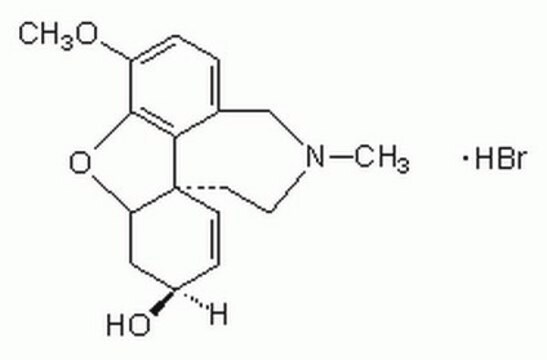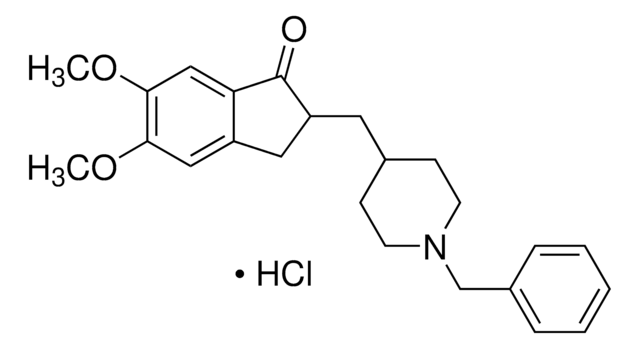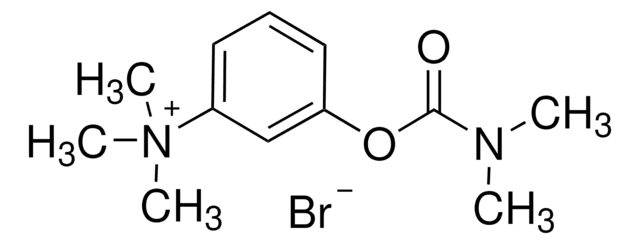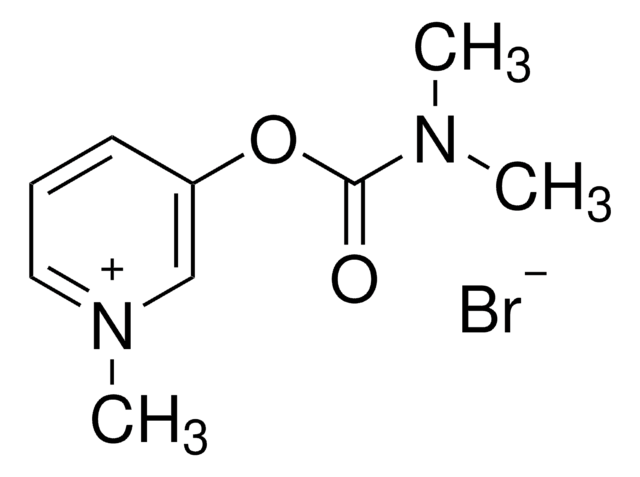G1660
Galanthamine hydrobromide from Lycoris sp.
≥94% (HPLC)
Synonym(e):
Galantamine hydrobromide
About This Item
Empfohlene Produkte
Biologische Quelle
plant (Ungeria victoris)
Qualitätsniveau
Assay
≥94% (HPLC)
Form
powder
mp (Schmelzpunkt)
270 °C
Löslichkeit
DMSO: soluble 10 mg/mL, clear, colorless
water: soluble 20 mg/mL, clear, colorless
Lagertemp.
−20°C
SMILES String
Br[H].COc1ccc2CN(C)CC[C@@]34C=C[C@H](O)C[C@@H]3Oc1c24
InChI
1S/C17H21NO3.BrH/c1-18-8-7-17-6-5-12(19)9-14(17)21-16-13(20-2)4-3-11(10-18)15(16)17;/h3-6,12,14,19H,7-10H2,1-2H3;1H/t12-,14-,17-;/m0./s1
InChIKey
QORVDGQLPPAFRS-XPSHAMGMSA-N
Angaben zum Gen
human ... ACHE(43)
Suchen Sie nach ähnlichen Produkten? Aufrufen Leitfaden zum Produktvergleich
Allgemeine Beschreibung
Anwendung
- as an AChE (acetylcholinesterase) inhibitor and positive control in acetylcholinesterase assay performed to determine the activity of AChE
- as a positive control in the screening of AChE inhibitors
- as a positive control in AChE inhibitory assay performed to determine the AChE-inhibitory activities of pyrithione and related sulfur-containing pyridine N-oxides
Biochem./physiol. Wirkung
Verpackung
Signalwort
Danger
H-Sätze
P-Sätze
Gefahreneinstufungen
Acute Tox. 3 Oral
Lagerklassenschlüssel
6.1C - Combustible acute toxic Cat.3 / toxic compounds or compounds which causing chronic effects
WGK
WGK 3
Flammpunkt (°F)
Not applicable
Flammpunkt (°C)
Not applicable
Persönliche Schutzausrüstung
Eyeshields, Faceshields, Gloves, type P2 (EN 143) respirator cartridges
Analysenzertifikate (COA)
Suchen Sie nach Analysenzertifikate (COA), indem Sie die Lot-/Chargennummer des Produkts eingeben. Lot- und Chargennummern sind auf dem Produktetikett hinter den Wörtern ‘Lot’ oder ‘Batch’ (Lot oder Charge) zu finden.
Besitzen Sie dieses Produkt bereits?
In der Dokumentenbibliothek finden Sie die Dokumentation zu den Produkten, die Sie kürzlich erworben haben.
Kunden haben sich ebenfalls angesehen
Unser Team von Wissenschaftlern verfügt über Erfahrung in allen Forschungsbereichen einschließlich Life Science, Materialwissenschaften, chemischer Synthese, Chromatographie, Analytik und vielen mehr..
Setzen Sie sich mit dem technischen Dienst in Verbindung.









